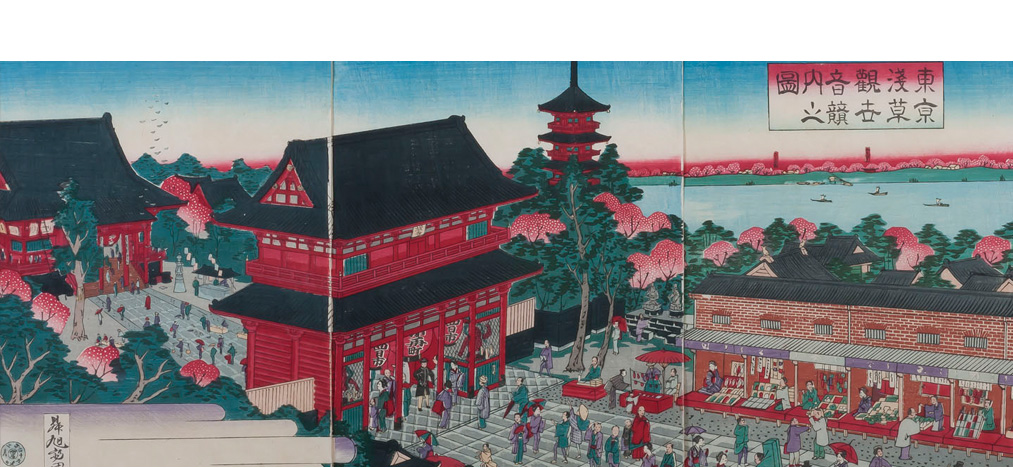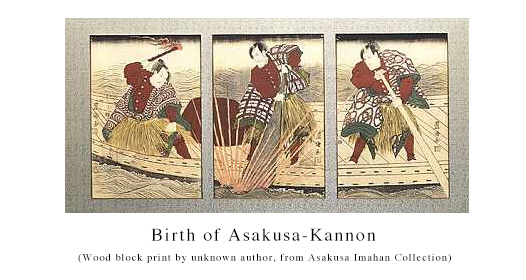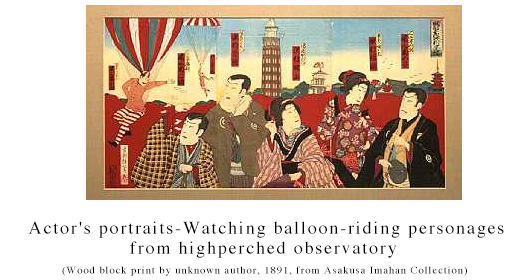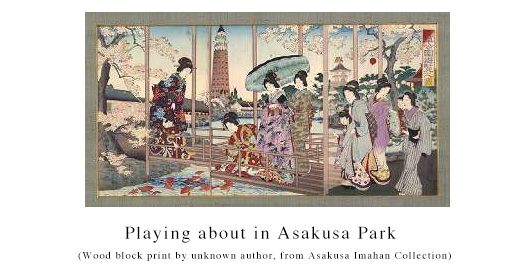
The Origin of Asakusa
During the Jomon era, Asakusa was submerged beneath the sea. Legend has it that it emerged during the Yayoi era.
How did the name "Asakusa" originate? According to historical records from Tokyo-fu, it is widely believed that the name derived from the presence of shallow grass (asa meaning shallow; kusa meaning grass) that once grew abundantly in the area of Musashino region where Asakusa is located.

When delving into Asakusa’s rich history, one of its most symbolic landmarks is the Sensoji temple, located just a five-minute walk from Asakusa Imahan. It is said that the Sensoji temple originated from a tiny golden Buddha statue, only 5.5 centimeters tall, that was discovered in a casing net by fisherman brothers at the Sumida River around 628 A.D. The sacred statue was subsequently brought to the area by a local priest, giving rise to this revered temple. Today, Sensoji stands as a significant religious symbol representing Japan’s cultural evolution and a popular destination amongst tourists from all over the world.
By the beginning of the Edo era, Asakusa had already gained considerable economic power. During this prosperous period, Asakusa residents indulged in various forms of entertainment, including the famous Kabuki street performances. To this day, Kabuki remains a cherished traditional Japanese theater form and continues to captivate audiences with its elaborate productions.

Following the Edo era came the Meiji, Taisho, Showa, and Heisei eras, during which increased cross-cultural exchange diversified Japanese society. This led to the seamless integration of Western customs into the daily lives of Asakusa residents. Cultural imports such as the opera, revues, croquette, and pork cutlet were adapted to reflect the unique Asakusa culture. It was also during this time that Gyunabe (the precursor to the modern Sukiyaki) surged in popularity.

Despite its flourishing times, Asakusa has endured several devastating disasters, including the Great Kanto Earthquake of 1923 and the Tokyo Air Raids of World War III. Nevertheless, Asakusa has remained an enduring symbolic location, representing one of the primary origins of Japanese culture and serving as the eternal roots of the country.
IMAHAN Co., LTD.
2-17-4, NISHI-ASAKUSA, TAITO-KU, TOKYO , JAPAN. 111-0035
Kokusai Street Head Restaurant
3-1-12, NISHI-ASAKUSA, TAITO-KU, TOKYO, JAPAN.
111-0035
TEL:+81-3-3841-1114 FAX:+81-3-3843-2224
MAIL: honten@asakusaimahan.co.jp
